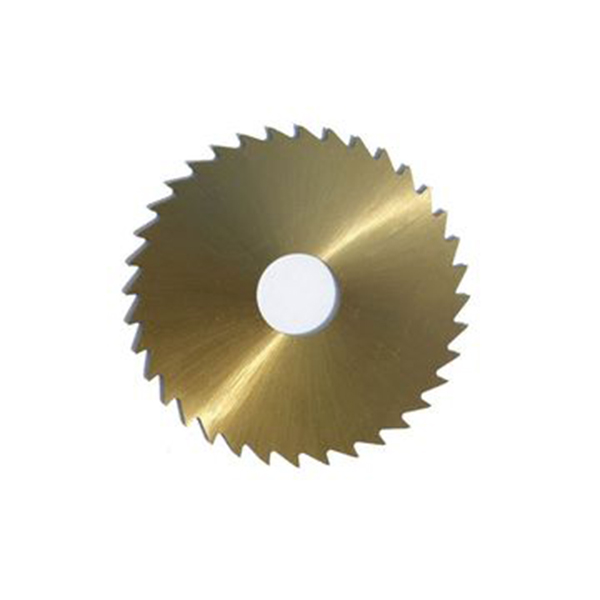Views: 0 Author: Site Editor Publish Time: 2025-03-14 Origin: Site







Ever wondered if you installed your circular saw blade correctly? Many people struggle with this question. It's more important than you might think!
In this post, we’ll discuss the correct way to install a circular saw blade. You’ll learn why blade direction matters and how to avoid common mistakes.
We’ll also share tips to ensure your saw performs at its best. Ready to get started?

In professional settings, the correct installation of a circular saw blade is crucial. An improperly installed blade can significantly impact cutting performance, leading to inefficient operations and potential safety hazards. Kickbacks and uneven cuts are common issues when the blade direction is wrong. Proper installation ensures smooth, accurate cuts and minimizes risks on the job site.
The direction of the blade affects how it interacts with the material. Circular saws are designed for the teeth to cut upward, pulling sawdust and debris away from the cutting area. This design enhances efficiency and maintains control during the cutting process. Incorrect installation can lead to slow, laborious cuts and increased wear on the saw.
Correct blade orientation is essential for both safety and performance. Aligning the blade’s teeth to cut upward reduces the risk of kickbacks and ensures that the saw operates smoothly. By following manufacturer guidelines and paying attention to the direction indicated by the arrows on the saw and blade, professionals can avoid common pitfalls and optimize their workflow.
Circular saws are unique tools in the workshop. Unlike table saws or miter saws, they cut from the bottom up. This upward cutting motion is essential for their function. It ensures stability and accuracy during cuts. Plus, it helps eject sawdust upward, keeping the cutting area clear.
Stability: The upward motion keeps the saw steady as it cuts through materials.
Dust Management: Sawdust is pulled away from the cutting area, reducing mess.
Safety: Proper blade direction minimizes the risk of kickbacks and accidents.
Table saws cut from the top down, while circular saws work in reverse. This difference means you need to install the blade correctly to maximize efficiency. The upward motion also ensures that the blade engages the material smoothly, reducing strain on the motor and extending its lifespan.
Installing a circular saw blade correctly is crucial for optimal performance and safety. Let’s break down the steps to ensure you get it right every time.
First, locate the arrows on your saw and blade. These arrows show the direction of rotation. Align the arrow on the blade with the one on the saw’s blade cover. This step is vital because misaligned arrows mean the blade will cut inefficiently.
Circular saws come in two main types: blade-right and blade-left. For blade-right models, the labeled side of the blade should face outward. For blade-left models, the opposite side (often called the “ugly” side) should be visible.
Unplug the Saw: Safety first! Always unplug the saw before working on it.
Remove the Old Blade: Use a wrench to loosen the arbor nut. Some saws have an arbor lock to make this easier.
Install the New Blade: Place the blade with the teeth pointing downward. Align the arrows and reattach the nut and washer.
Reassemble and Test: Plug in the saw and test the blade rotation. Make sure it spins in the correct direction.
By following these steps, you’ll ensure your circular saw performs at its best.
To get the most out of your circular saw, a few extra steps can make all the difference. Let’s dive into some tips that’ll keep your saw running smoothly and safely.
Check your blade regularly. Sharp teeth mean cleaner cuts. If the blade looks dull, replace it. Also, ensure the blade is aligned properly. A misaligned blade can cause uneven cuts and wear out your saw faster. Routine maintenance is key. Clean the saw after each use and lubricate moving parts as needed.
Safety should always be top of mind. Wear protective gear like goggles and gloves. These simple steps can prevent injuries. When using the saw, keep both hands on the handles and maintain a firm grip. Never force the saw through the material. Let the blade do the work.
Different projects need different blades. For woodworking, a fine-tooth blade works best. For cutting metal, a carbide-tipped blade is ideal. Consider the blade size too. A larger blade offers more power, while a smaller one is easier to handle. Always match the blade to your material and task for the best results.
We’ve covered a lot about circular saw blades. Remember, the direction matters. Align the arrows on the blade and saw. Check if your saw is blade-right or blade-left.
Keep safety in mind. Wear protective gear and handle the saw properly. Regular maintenance ensures the blade stays sharp.
Always refer to manufacturer guidelines for your specific model. Follow these tips for smooth, efficient cuts every time.For high-quality TCT saw blades, visit LU Tools. We offer a wide range of blades for wood, steel, and bamboo. Happy sawing!